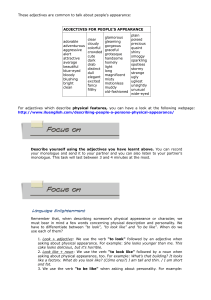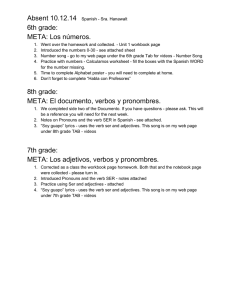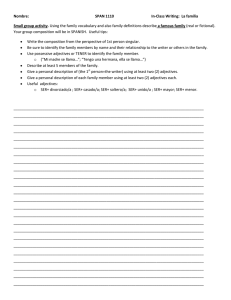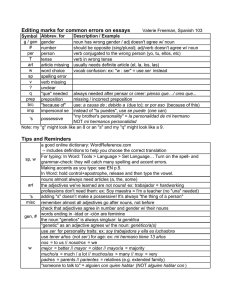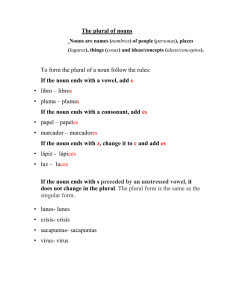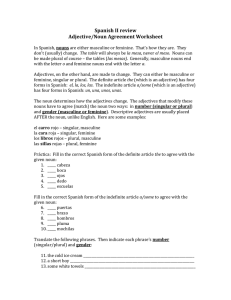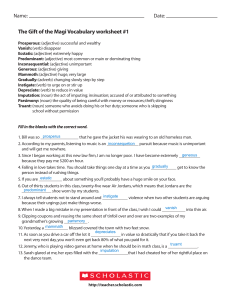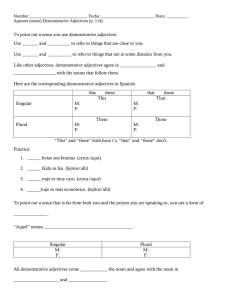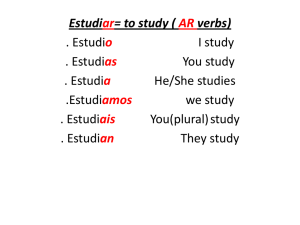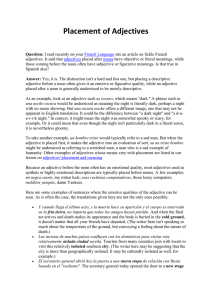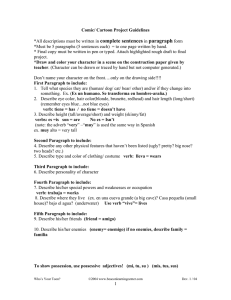Notas: Plurals and Ser
Anuncio
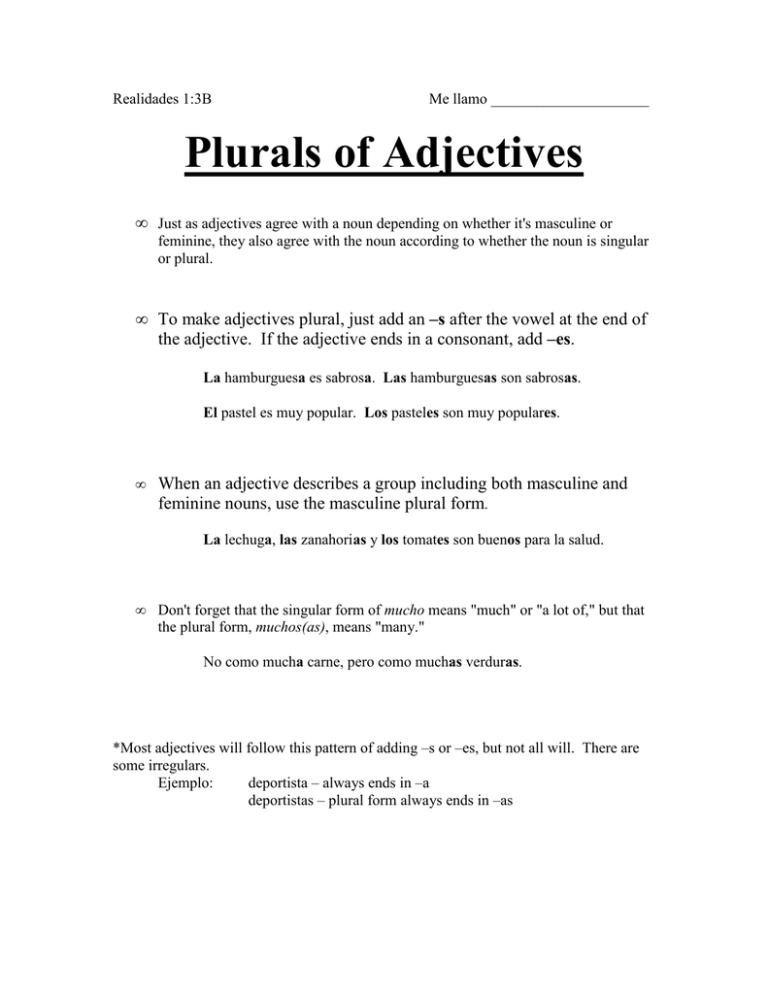
Realidades 1:3B Me llamo _____________________ Plurals of Adjectives • Just as adjectives agree with a noun depending on whether it's masculine or feminine, they also agree with the noun according to whether the noun is singular or plural. • To make adjectives plural, just add an –s after the vowel at the end of the adjective. If the adjective ends in a consonant, add –es. La hamburguesa es sabrosa. Las hamburguesas son sabrosas. El pastel es muy popular. Los pasteles son muy populares. • When an adjective describes a group including both masculine and feminine nouns, use the masculine plural form. La lechuga, las zanahorias y los tomates son buenos para la salud. • Don't forget that the singular form of mucho means "much" or "a lot of," but that the plural form, muchos(as), means "many." No como mucha carne, pero como muchas verduras. *Most adjectives will follow this pattern of adding –s or –es, but not all will. There are some irregulars. Ejemplo: deportista – always ends in –a deportistas – plural form always ends in –as El Verbo Ser • Ser, which means "to be," is an irregular verb. This means that is does not follow the regular pattern of conjugating and –er verb. Uses of the Verb Ser: o Describe what a person or thing is o Describe what a person or thing is like Ser = to be * Remember the verb estar, which also means "to be". There are 2 verbs that mean "to be" in Spanish, but their uses are different.
